Art & Exhibitions
New York Gallery Beat: 6 Critics Review 16 Shows
Spring exhibitions from Hanna Liden, Sterling Ruby, and other artists.
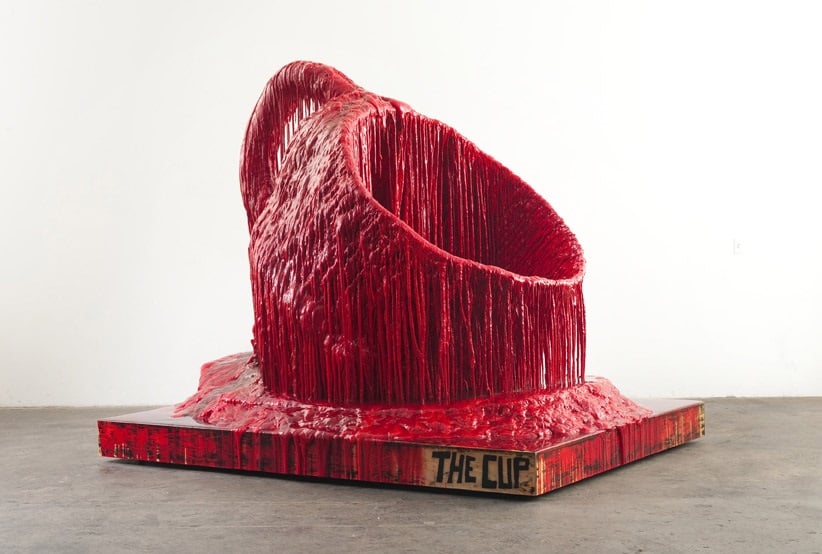
Spring exhibitions from Hanna Liden, Sterling Ruby, and other artists.

Artnet News


David Scanavino’s Dorothy (2014) [detail].
Photo: Courtesy TEMP Art Space.
I like David Scanavino’s murals a lot. In this show curated by Alex Ahn and Ari Lipkis, the Brooklyn-based Scanavino (who had a cool solo outing at Klaus von Nichtssagend gallery last year) works in his characteristic material, wood pulp applied directly to the wall. Finger marks are still in evidence, giving a sense of the quick-fire process; from a distance the rectangle of the dried material resembles an abstract quilt, shimmering immaterially with color but also radiating a defiant oddball object-ness. At TEMP Art Space, Scanavino’s mural (and wall-mounted Formica sculptures) are highlights of a group show hailing from a sub-genre of contemporary art consisting of things that look like painting, but arrive at the look by quirky means: Evan Robarts uses metal scaffolding to frame squares of paint applied directly to the wall, making a Mondrian-like grid; Gabriele Picco brings together bunches of colored scouring pads for painting-like assemblages… Still, Scanavino’s precise but dreamy process is what best shows the potential of this line of thinking for me. — Ben Davis
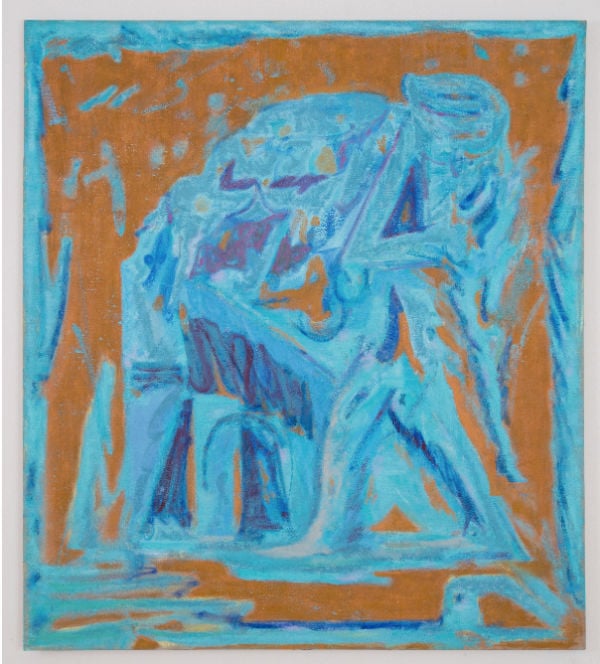
Michael Berryhill, Saturn and Son (2014).
Photo: Courtesy Kansas.
Michael Berryhill, Kansas Gallery, 59 Franklin Street, closes June 14
I don’t quite know what’s going on in Michael Berryhill’s paintings. I think that might be part of the point. The nine small-to-medium-sized canvasses by the Texas-born, New York-based artist (b. 1972) are something like Matisse-ian Rorschach blots, sunny, inchoate configurations of lines and colors that suggest slides for an art history test with no answer. Punning titles hint at subjects, but everything is deliberately hard to read—you can pick out the form of a paint-laden easel in Axis of Easel, but everything else is a welter of conflicting patterns. In the back gallery, two paintings, one small, one big, face each other across the room, titled Saturn and Son. Both are fussy, fuzzy masses of lines that hint at the crouched, depraved Titan of myth (though not in the most obvious way, if you’re hip to the reference); both are almost exactly identical in composition, as if to declare, “yeah, this is exactly what I meant to do.” — Ben Davis
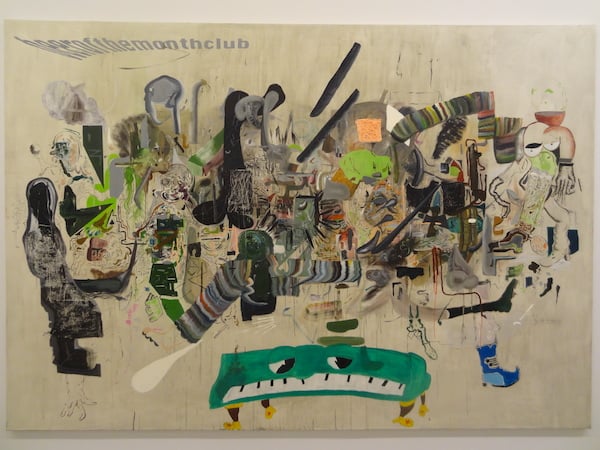
Michael Bauer, Fleetwood Mac (Creme) (2014).
Photo: Benjamin Sutton.
Michael Bauer, Lisa Cooley Gallery, 107 Norfolk Street, closes June 22
All of modern painting seems to be contained in the clusters of scribbles, swaths of impastoed oil, half-finished figures, Pop art foodstuffs, and squiggly stray limbs that float around the center of each of Bauer’s paintings. René Magritte and Sue Williams seem especially prominent in the German-born, New York-based artist’s constellation of influences in these new pieces, which are among his biggest and funniest to date. There are, for instance, the floating pipes and bowler hat in Rickter-Bar (Anti-Creme) (2014) that evoke the Belgian Surrealist, as well as the innumerable suggestive appendages in curly, cartoon-like lines populating each painting, reminding one of Williams’s orgiastic compositions. And those are just two major nodes on the web of allusions stretching across these immensely satisfying new paintings—which make the accompanying prints feel all the more thin. — Ben Sutton
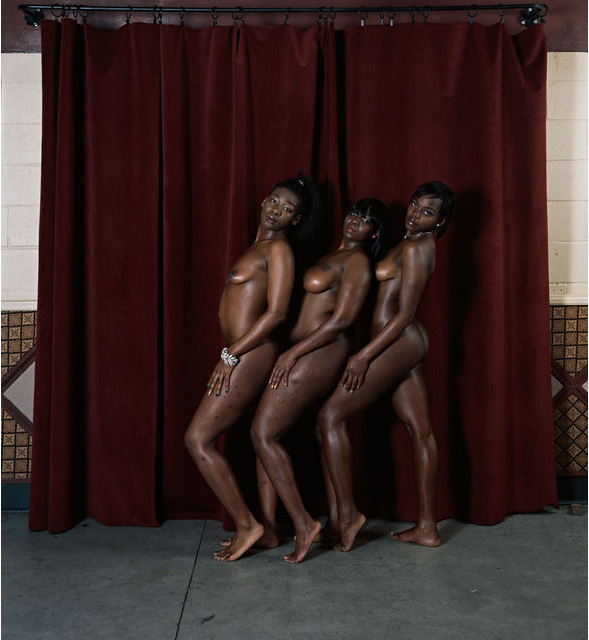
Deana Lawson, Three Women (2013).
Photo: Courtesy “Black Eye.”
“Black Eye,” 57 Walker Street, closes May 24
A pop-up show done with polish and pizzazz organized by Nicola Vassell, who has marshaled a packed survey of 26 mainly already-known artists, mainly of African descent (including those who hail from the other side of the Atlantic, like Steve McQueen and Lynette Yiadom Boakey). The result, despite an accompanying press-release-cum-manifesto that takes Obama’s second term as a cue to reconsider black identity, is not so much an integrated statement as an A-list sampler, with some of the indiscriminate eclecticism that implies, but also with some killer material: David Hammons’s ghostly Untitled (Body Print) (1991); New York-based Deana Lawson’s empathetic triple nude, Three Women (2013); Jacolby Satterwhite’s hyperkinetic videos, which read like broadcasts from some funkadelic basement rave of the contemporary mind. — Ben Davis
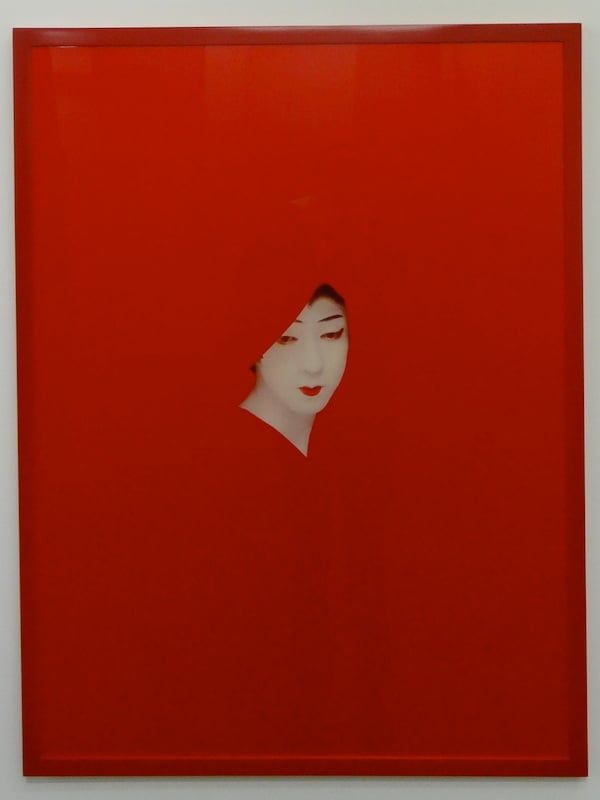
Sarah Charlesworth, Red Mask (1983).
Photo: Benjamin Sutton.
Sarah Charlesworth, Maccarone Gallery, 630 Greenwich Street, closes June 21
When Charlesworth died last year at the age of 66 we lost a major pioneer of conceptual photography. This is abundantly clear from the series on view here, “Objects of Desire (1983–89),” created by photographing images cut from magazines and books—everything from silky dresses and studded leather bondage gear to exotic animals and an ancient fertility statue—against bold monochrome backdrops. The resulting images, sometimes installed in pairs, range from comic (like the 1988 diptych Fear of Nothing, which juxtaposes an all-black square with the shocked face of a sculpted figure against a sky-blue backdrop) to creepy (such as the steampunk ram’s head staring out from a black backdrop in 1983’s Black Mask). But in every instance Charlesworth’s radical recontextualization of these mass-media images arrests your attention and focuses your eye on the innate beauty and loaded symbolism of each appropriated picture. This is high art for our age of universal photographic literacy. — Ben Sutton
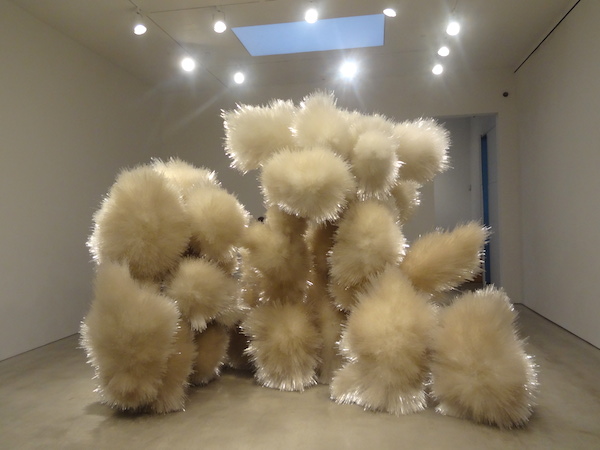
Tara Donovan, Untitled (2014).
Photo: Benjamin Sutton.
Tara Donovan, Pace Gallery, 534 West 25th Street, closes June 28
When, decades from now, we look back on the career of our great sculptress of petroleum products and office supplies, I bet 2014 will be dubbed her alpine period. She has filled Pace’s vast, two-room space with two massive sculptures, and both suggest geology: the larger is a range of stalagmite-like mountains made from index cards; the second looks like some kind of ice cactus, with its clusters of spiky acrylic urchins taking on geological airs from certain angles and suggesting a yeti with icicles for fur from other vantage points. This may not be the most profound work Donovan has ever made, but it is cooler than a polar bear’s toenails. — Ben Sutton
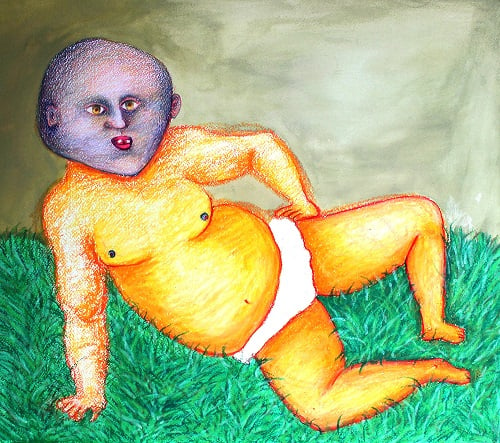
Ann Hirsch, Sexy Baby in Repose (2014).
Photo: Courtesy American Medium.
Ann Hirsch, American Medium, 424 Gates Avenue, Brooklyn, closes June 26
Performance artist Ann Hirsch’s first gallery show, “Muffy,” is a whimsically weird foray into adolescent sexuality. From scrollable screens of erotic AOL chats fitted into the bellies of oversized stuffed bears, to an exaggeratedly large-scale notebook page scrawled on with self-pitying poetry, Hirsch has a way of saying things literally while also poking fun of what she’s saying and how she’s saying it. Selectively placed throughout a white-walled room, her work recalls toys left in a child’s nursery. Sometimes it feels embarrassingly over the top, but it’s never conservative. Her drawings alone are worth taking the trip out. — Jeffrey Grunthaner
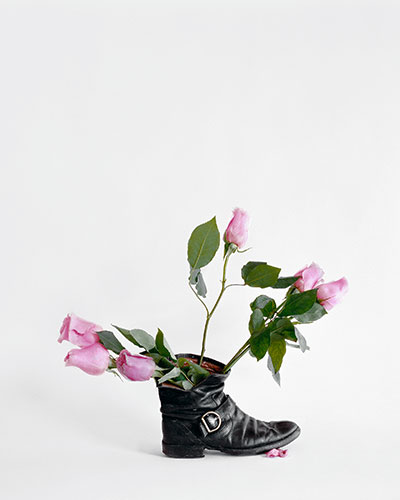
Hanna Liden, Let it Go (2014).
Photo: Courtesy Maccarone Gallery.
Hanna Liden, Maccarone gallery, 98 Morton Street, closes June 14
This series of photographs from the Swedish artist features flowers resting in everyday, borderline grotesque objects like used cups and bottles, rotting food, and an old boot. It is understated, lovely, and poetic—a simple gesture of juxtaposition between the beautiful and the ugly, extremes as two halves of a whole. We relish beauty, but rarely stop to realize that it would mean little without something to be in opposition to. Liden also has a gift for using vibrant colors subtly, in a way that connects the disparate objects, as well as each work to the one that came before it, and finally to the series as a whole. — Cait Munro
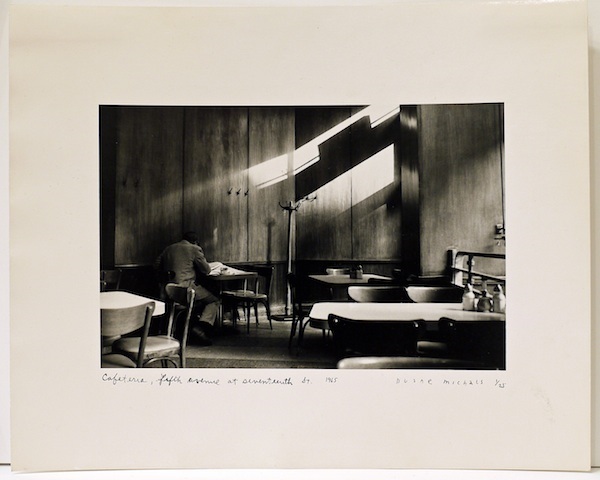
Duane Michals, Empty New York (cafeteria) (1965).
Photo: Courtesy DC Moore Gallery.
Duane Michals, DC Moore Gallery, 535 West 22nd St #2, closes May 31
Duane Michals has compared 20th-century New York in the early morning hours to a stage set. This is apropos. The pleasure-trick of the 30 gelatin silver prints on view at DC Moore Gallery—all of them single prints dating from the 1960s—is that they impart a sense of waiting, not one of isolation or desolation. One looks at them and likely recalls the serene Paris of Atget, rather than the ruined interiors of someone like Camilo José Vergara. These interiors—a barber shop with the classic chairs, a butcher shop with sawdust on the floor, a corner of a cafeteria—might bring on nostalgia, but more likely they will provoke admiration for the octogenarian American photographer. He makes it easy to step away from the drama of the street, into folds of time. It’s almost a challenge: Go and experience these, the off-hours in the city, Sky Masterson’s time of day. — Elizabeth Manus
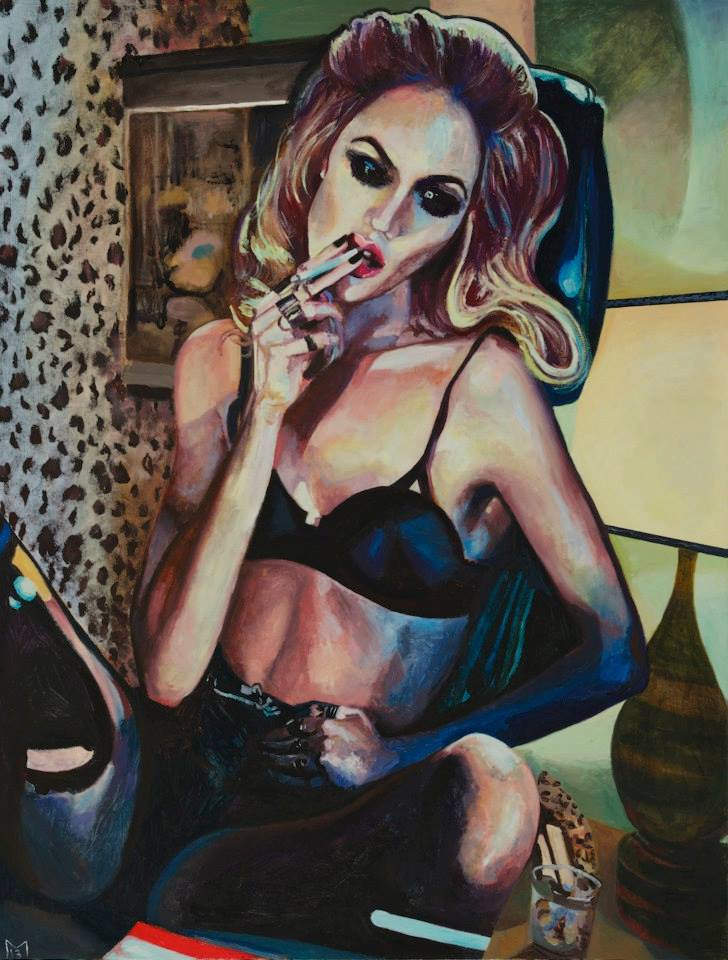
Heather Morgan, Warm Leatherette (2014).
Photo: Courtesy Dacia Gallery.
Heather Morgan, Dacia Gallery, 53 Stanton Street, closes June 7
The women in painter Heather Morgan’s canvasses are everyday supermodels—impossibly glamorous yet intricately flawed. Rendered in garish colors and provocative positions, they sport heavy makeup, caress flowers, puff cigarettes languidly and vamp for the viewer, with breasts exposed and cheekbones protruding. In addition to being visually ensorcelling, the paintings propose questions about the nature of female beauty and identity. Ultimately, despite their allure and fragility, these fictional vixens exude the feeling that something darker is lurking beneath the glitzy façade. And for most women, it is. — Cait Munro
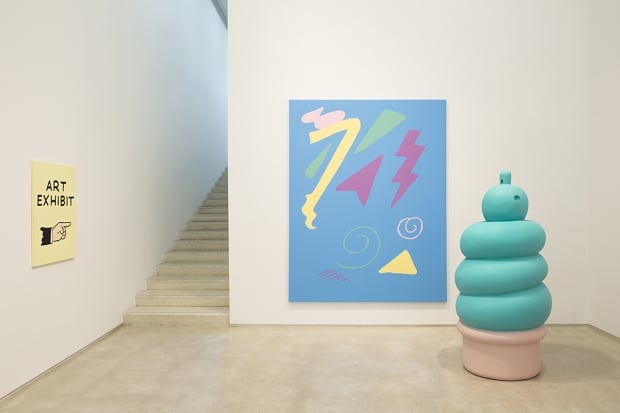
Installation view of “Exhibit of Abstract Art, Salon 94 Bowery, 2014.
Photo: Courtesy Salon 94.
Jayson Musson, Salon 94 Bowery, 243 Bowery, closes June 21
A precursor to the enjoyment of this show, “Exhibit of Abstract Art,” is some background: Musson’s off-beat, pastel colored paintings and sculptures (a giant ice-cream cone, a sign that says “ART EXHIBIT”) are, in fact, recreations of caricatures of modern art found in the classic comic strip “Nancy,” which often riffed on and made fun of modern art. Armed with that knowledge, it is still possible to feel underwhelmed by the only-occasionally-satisfying pieces Musson (best known for his satirical “Art Thoughtz” YouTube video series) has created, but at least you get the joke. —Cait Munro
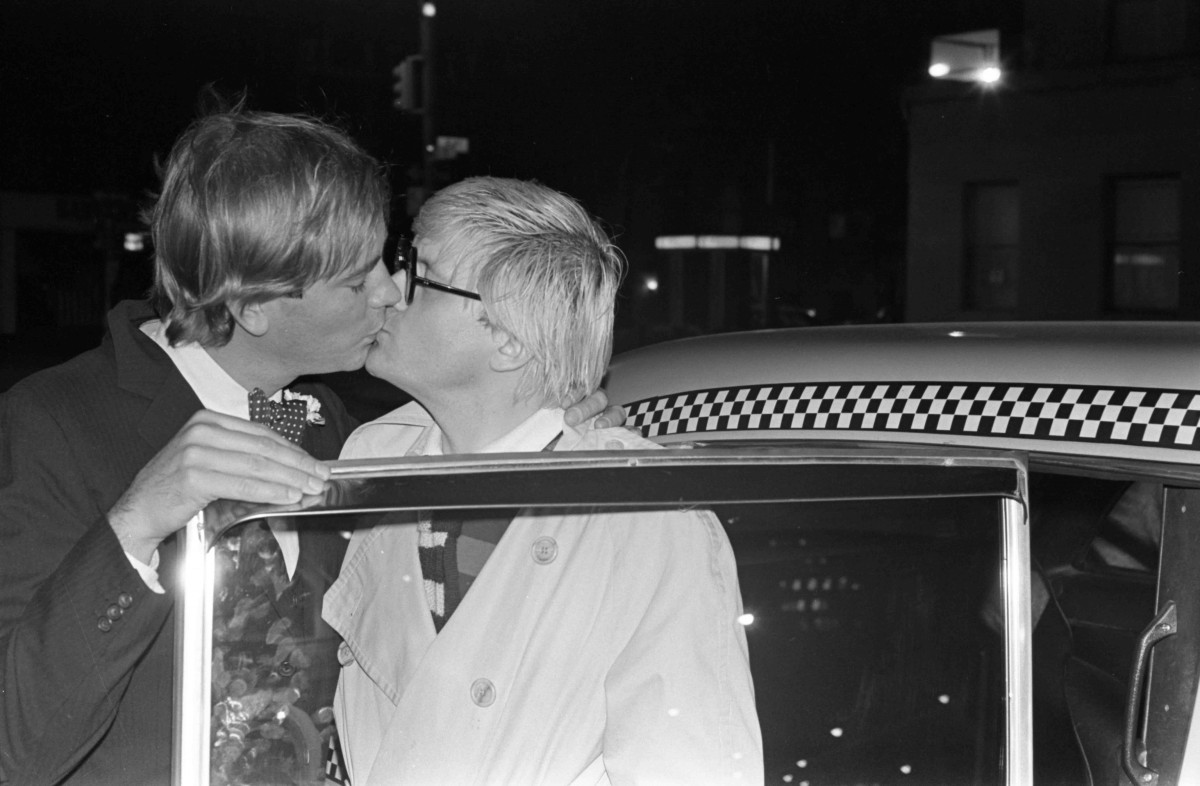
Alan Kleinberg, David Hockney and Friend-One Fifth, New York City (1977/2014)
Photo: Courtesy OUTLET
“OUT ALL NIGHT,” OUTLET, 253 Wilson Avenue, Brooklyn, closes June 1
Encountering the photographs of Alex Singh in the back gallery after passing through OUTLET’s front-room display of images by veteran filmmaker and photo journalist Alan Kleinberg, the connection between these two artists will almost feel predestined, despite the differences of generation. Kleinberg’s photos of New York’s downtown scene, taken in the years 1973-1981, and Singh’s photos from a 2010-2012 world tour with Japanese electropop group Trippple Nippples document nightlife and festivity at two very different time periods—yet what comes to light in both is the sheer variety of lifestyles still available to us today—the vertigo of a world in flux, where the transformative energy of the will-to-live creates a positive foundation for alternative lifestyles. — Jeffrey Grunthaner
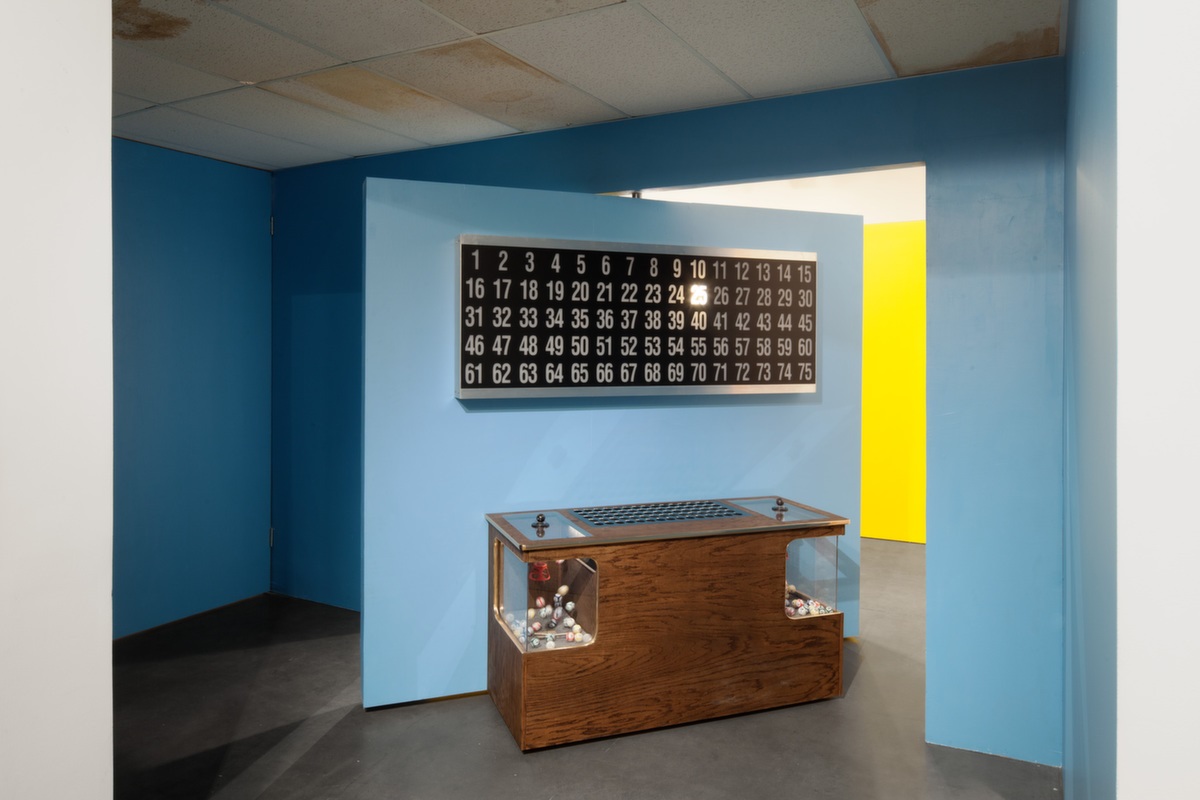
Installation view of Mika Rottenberg: “Bowls Balls Souls Holes.”
Photo: Lance Brewer, Courtesy Andrea Rosen Gallery.
Mika Rottenberg, “Bowls Balls Souls Holes,” Andrea Rosen Gallery, 525 West 24th Street, closes June 14
Concurrent with the artist’s current solo museum exhibition of the same name (through June 8 at the Rose Museum at Brandeis University), Mika Rottenberg’s “Bowls Balls Souls Holes,” her first show at Andrea Rosen, is ambitious, intriguing, and as delightfully bizarre as those who know her work have come to expect (cue a crude factory-production that makes maraschino cherries out of bright red acrylic fingernails). Here Rottenberg furthers her exploration into the phenomenon of cause and effect, even though her portrayal of these is usually wildly incomprehensible. This includes the centerpiece of the exhibition, a 27-minute film that positions an active bingo hall in Harlem, where a woman drops colored clothespins into a hole, as the unlikely catalyst for strange outcomes elsewhere. After being moved through a series of devices, we eventually see a man who catches the pins, a rainbow ring of them clipped to his face. Entering the gallery, viewers must move through a slowly rotating sky blue wall to enter the show: on one side is the large bingo machine itself, with balls fluttering up tubes and random numbers lighting up. On the flip side is an assortment of aluminum foil wrappers roughly arranged in a circle. All of these intriguing sculptural elements in the gallery show can be spotted in the film (though this doesn’t mean their purpose is further clarified). — Eileen Kinsella

Sterling Ruby, The Cup (2013)
Photo: Robert Wedemeyer.
Sterling Ruby, Hauser & Wirth, 511 West 18th Street, closes July 25
L.A. art star Sterling Ruby’s current show of new work at Hauser & Wirth is a marriage made in heaven. His massive, dripping, blood-red ceramic artworks and fabric installations don’t so much occupy as storm the gallery’s cavernous downtown space. The common thread glimpsed throughout Ruby’s varied and multidisciplinary approach—the show includes a staggering range, from paintings, cardboard collages, fabric collages, tapestries, ceramics, and a mobile—is that everything is B-I-G, not to mention just plain fun to look at; from the giant, tilted coffee mug (Big Cup) and standing columns with stalactite-like drips, to what look like two giant floppy dolls covered in fuzzy, U.S. flag-patterned fabric that dangle from the rafters. Deciding whether the embrace these dolls are locked in is playful, passionate, or violent is another matter. The bright, innocent colors and seemingly playful sculptures belie some of the darker undercurrents here, such as Big Yellow Mama, a massive, sunny-yellow chair that happens to be an enlarged replica of an electric chair used for executions in Alabama for decades. — Eileen Kinsella
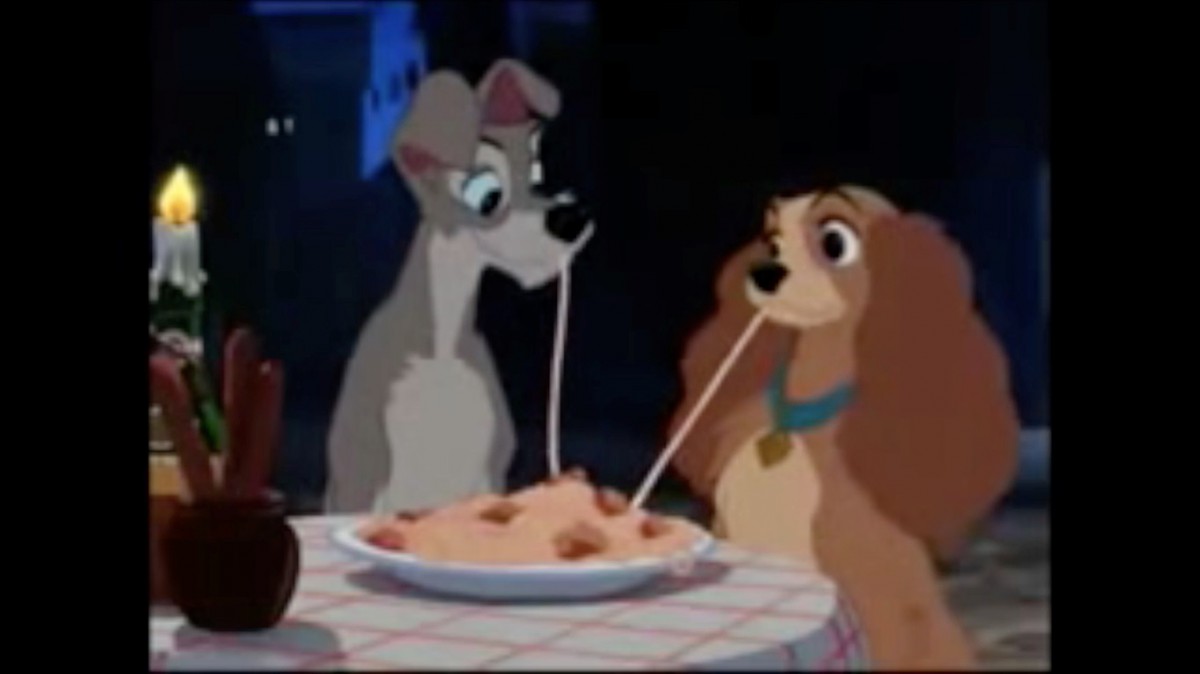
Legacy Russell, DIRTY TALK | CLEAN FOOD (2014) [still]
Photo: Courtesy Field Projects.
Writer, curator, and East Village native Legacy Russell’s first solo exhibition “Dirty Talk | Clean Food” sets out to demystify rituals of “taste,” in both its alimentary and aesthetic senses. In the darkened space of Field Project’s single-room gallery, Russell projects two videos onto two walls, dramatizing the comic absurdity of societal conventions that surround eating behavior. One wall streams a montage of scenes from popular movies (the restaurant orgasm scene from When Harry Met Sally, the pasta scene from Lady and the Tramp), driving home how taste, tasting, and the search for “tasteful things” all-too-easily turn into their opposite: “the tasteless,” the indecent. The adjacent wall features originally shot footage, showing a couple seated at a kitchen table, not speaking to one other, but acting as though they mean to. Now and then they look away from each other toward the camera, at the viewer, objectifying him or her in the presence of these awkwardly sexualized acts involving items of food. — Jeffrey Grunthaner
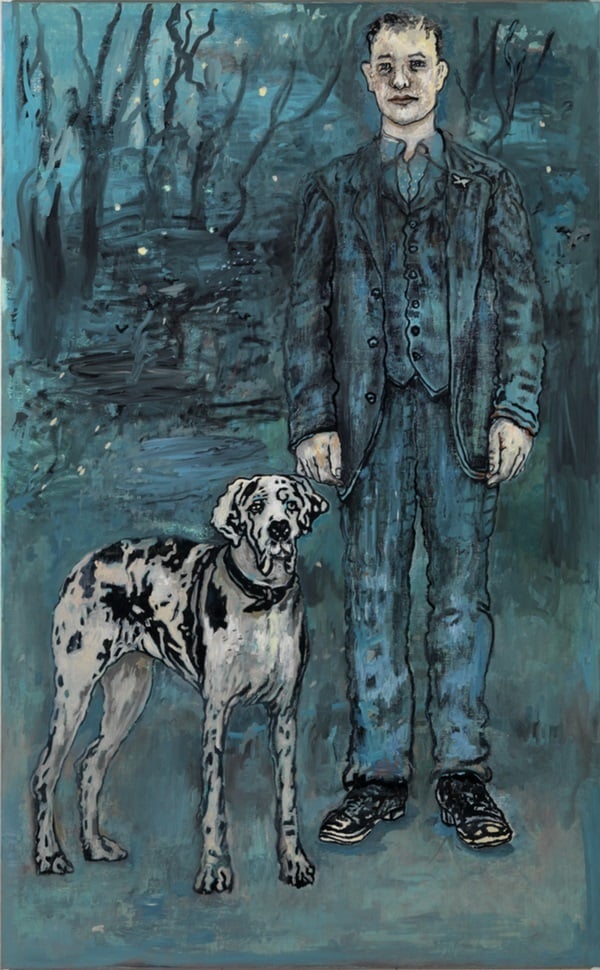
Hannah van Bart, Doubt (2013).
Photo: Courtesy Marianne Boesky.
Hannah van Bart, Marianne Boesky Gallery, 509 West 24th Street, closes June 14
Dutch artist Hannah van Bart’s fourth solo show at Marianne Boesky consists of a series of haunting, evocative figurative portraits that purposefully defy easy categorization or placement in time. While clothing in the portraits, which range from side profiles to full length and more tightly cropped faces, evokes an earlier time, there is also a distinctly postmodern feeling in the steady, intense gaze of her subjects, by turns melancholy, wistful, deadpan, and defiant. The mood is set as much by her choice of background and expressionistic color tones—sea green, rust, twilight blues—as by their posture and facial expression. Van Bart’s inspiration comes from found photographs rather than real subjects. The liberties she takes with the material result is scenes that are mysterious, complex, and mesmerizing all at once. — Eileen Kinsella